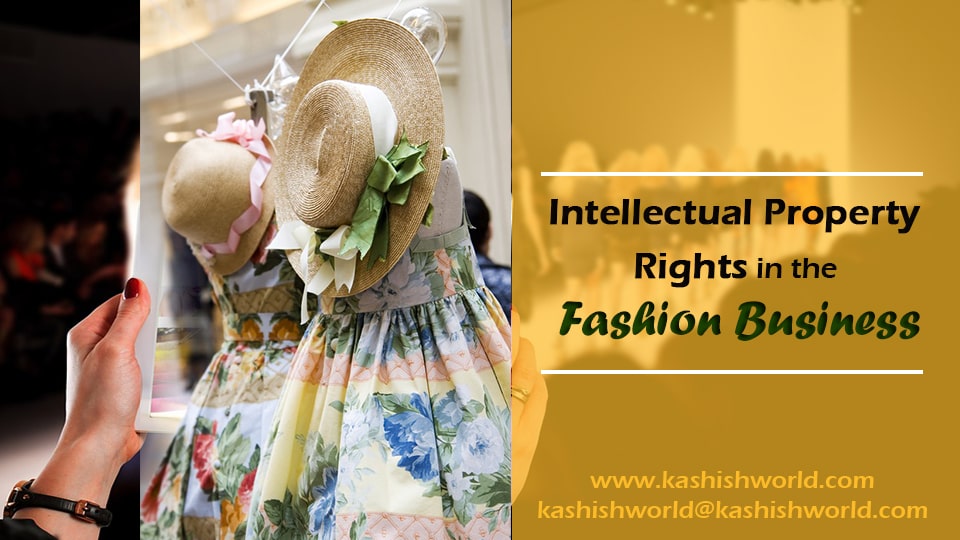
In the last few decades, the ever-evolving fashion industry of creative expression has been one of the most significant social phenomena of contemporary societies. The fashion industry at the heart of the business is not just about garments and apparel, but it is a company’s ability to build and monetize a unique brand to achieve the competitive edge essential for success. As and when a design or a brand becomes popular, others tend to copy it shamelessly which leads to a huge loss faced by the manufacturers of the original products. Quite often, we also come across counterfeit products of widely known brands which not only cause distress to the fashion industry but also pose a huge threat to the economy as well.
How Is IPR Important To The Fashion Industry?
Intellectual Property (IP) Rights are the rights governing the intangible innovations of the human intellect. They represent an important body of law in almost every industry including the fashion business due to their ability to protect creations of the mind. It is a matter of fact that yes; IPR and the fashion industry move hand in hand as the creations or designs which are accepted as fashion in the industry are considered as the intellectual creations of an individual who owns an exclusive right to protect them. With that in mind, each industrial design asset and the brand that markets that asset within the fashion industry must be protected through Intellectual Property Rights. Therefore, it is imperative for any country’s legal system to promote creativity and protect the Intellectual Property Rights of the creations of the fashion industry.
The Most Common Forms of Ip and the Fashion Items Protected Under Them Are as Follows:
Copyrights are the exclusive rights which protect the original artistic works. Anything that is functional or has a physical function in the real world can never be copyrighted. In the fashion industry, the elements of fashion designs are afforded protected if they meet the requisite levels of creativity, originality, and are fixed in a tangible medium.
In the fashion business, jewelry gets copyright protection as it is decorative and resembles miniature sculptors. Another area of fashion that gets copyright protection is two-dimensional designs including fabric prints, lace patterns, and jacquard weave. This kind of protection turns out to be super beneficial for a designer who is creating his or her own fabric.
A Trademark could be a word, name, symbol, logo, or a design that distinctively identifies the origin of the goods and services. When it comes to the fashion industry, trademark protection cannot typically protect an entire accessory or garment, but can at least protect the logo or the fashion label. Trademark Protection is a relatively strong form of protection for famous and recognized fashion brands, therefore it is highly advisable for the fashion designers to register their mark to protect their brand’s right to revenue and also help the customers distinguish between genuine and counterfeit items.
In the fashion business, the names and logos can be trademarked by the type of products which includes clothing, accessories, shoes, fabric, to name a few. Another relevant type of Trademark Law in the fashion world is “TRADE DRESS” which extends to the configuration including the design and shape of a product and/or its packaging. Trade dress creates a visual impression of the total image of a product.
A Patent is an exclusive IP right granted to inventors whose skill or labor produces an idea of a new process. Coming to the fashion industry, a patent has to be something that is not only useful but is also new or novel to the entire world around. Therefore, Patent Protection is an important aspect leading to the successful commercialization of fashion brands that particularly need a huge amount of investments to complete development to the commercial stage.
In the fashion business, footwear, specifically athletic shoes, and foundation garments or lingerie are few categories which have been subject to patent protection for a long period of time. There is another subcategory of patents extending to “DESIGN PATENTS” which protect the ornamental and decorative aspect of functional items. Handbags or shoes which are particularly sculptural or decorative might have a possibility for a design patent.
Latest Trends and Controversial Issues in the Fashion Business
A good visual imagination and creativity are the most important aspects of the fashion industry. On one hand, the plethora of creativity and visual imagination, help brands achieve recognition and on the other hand, counterfeit and duplicate fashion items pose a major threat to this industry. If one follows the news daily, one may come across several cases of Intellectual Property Rights Infringement around the globe. For instance, there was one case in which the France fashion house, Louis Vuitton sued a women’s shoe retailer in China for selling footwear that strongly replicated noteworthy attributes and features of its latest spring collection. Such cases not only adversely affect the brand’s name and reputation in the fashion industry but also cause a violation of the rights of the original rightful owners.
CONCLUSION
The fashion business is all about creativity and is known to invest an enormous amount of money every season to create new and innovative ideas. In spite of this significant investment, fashion designers usually fail to protect their Intellectual Property due to the growing trends of counterfeit fashion items. Although it is true that it would be almost impossible to entirely remove the issue of counterfeit items and prevent others from copying the design, however, if the innovation is protected in an efficient way, the chances of damage are reduced. Therefore, it is highly imperative that the owners of Intellectual Property should stay alert by seeking the right protection for their brands and creations. Moreover, the governments of all countries should focus on the recent trends of counterfeiting and pass applicable laws for the fashion industry to safeguard the Intellectual Property and enhance their country’s economy.

